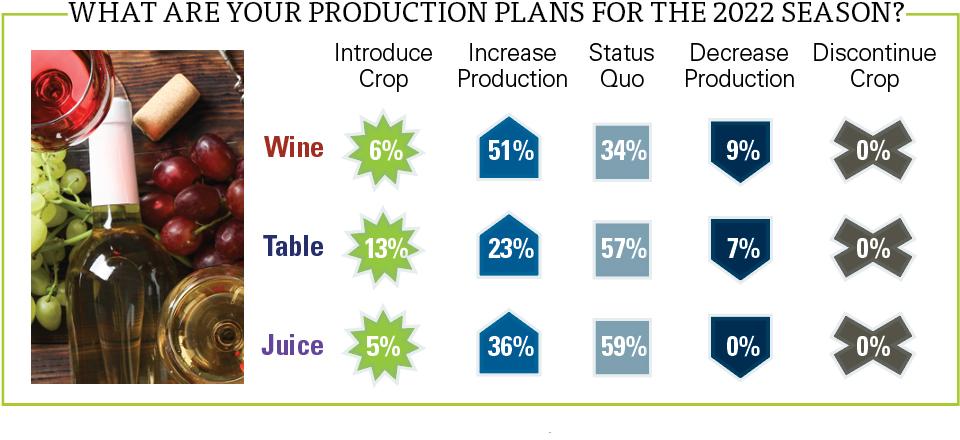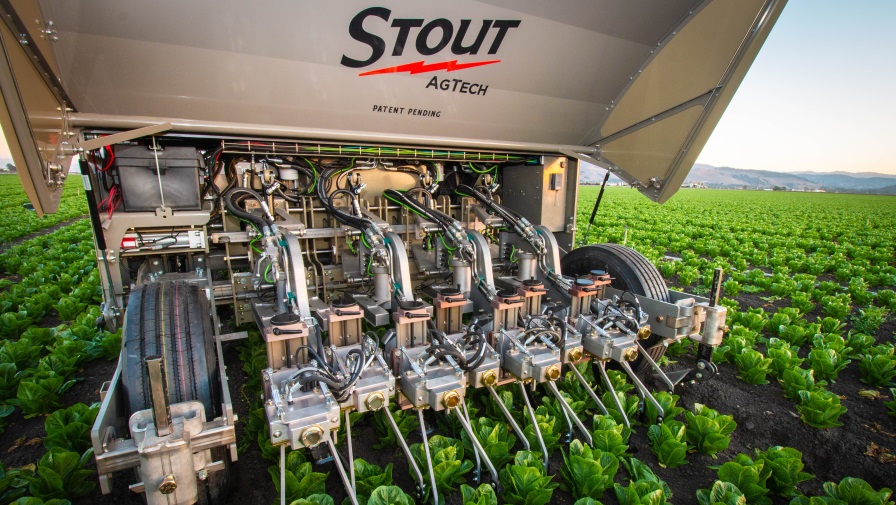For Grape Producers, Annual Survey Reveals a Tale of Two Cities
The breakdown between the types of grape growers answering American Fruit Grower’s annual State of the Industry survey became clear in their answers to a couple of questions. First: “What was the best thing you did to improve profits in 2021?”
Larger wine grape growers mostly answered by saying they increasingly mechanized operations, often, as might be expected, in response to rapidly rising labor costs.
“Lessen labor costs with improvement to our machinery operations,” is a typically succinct answer from one grower.
However, smaller growers, who made up the majority of respondents — though about one-quarter of respondents farm more than 100 acres — as well as those growing raisin and table grapes, tell a different story. For example, in response to the COVID-19 pandemic, pick-your-own (PYO) sales soared across the country.
“U-Pick was very busy,” one grower reports. Of course, that also caused growers to think about new ways to move their fruit.
“[We] sold by volume, not weight,” one says, “and did not handle product.”
To deal with the increased traffic, one PYO grower says they were going for speed.
“Sell by bucket instead of weight,” they report.
One Eastern PYO grower got creative and decided to specialize in a native grape.
“’Muscadine’ grapes are being recognized for their medicinal value,” they say. “[We’re] selling ‘Muscadine’ grapes as a health food.”

MAIN CONCERNS
Responses to the second question also show a clear breakdown among types of growers: “What is your biggest concern and what can be done to alleviate it?”
Grape growers of all types cite labor costs and lack of labor. But mostly, as one might guess, it was the raisin and table grape growers, who face far more difficulty in mechanizing their operations and reducing labor dependence.
For wine grape growers, it is more about costs — of all types — eating into the bottom line and potentially having damaging effects in the future.
“Profitability,” is how one grower sums it up: “Market prices barely allow margin in a high-investment crop.”
Another agrees that they appear to be caught in a buzz saw.
“Wine grape prices seem to be static, or going down, while inputs are going up.”
For growers of other types, the complaints are similar, although targeted to their type of crop. For example, a raisin grower says they were caught in a similar problem of decreasing worker accessibility combined with supply chain shortages.
“[It’s a] lack of harvest labor and lack of trays on which to dry raisins,” they say.
One table grape grower, frustrated by the inability to find workers, says he is going to try a whole new source.
“Table grape pickers are almost impossible to find,” he says. “[We] must do H-2A in [the] future.” (The H-2A temporary agricultural workers program, or H-2A visa program, helps American farmers fill employment gaps by hiring workers from other countries.)
Other concerns emerging from the survey break down roughly among Eastern and Western growers. Those with disappointing crops in 2021 in the West primarily cite weather-related problems, such as early hot weather during bloom and mildew. Eastern growers cite vertebrate pests as their primary problems, with a wide variety cited: deer, rabbits, feral pigs, ground squirrels, raccoons, and gophers, especially on young vines.
WHITHER ORGANIC?
More than half of the growers answering the survey — further reflecting the many responses from smaller growers — say their operation was 100% organic.
As might be expected, they are positive, although all growers are struggling with higher input costs.
“Organic herbicides and fuel are very expensive, so we’ll be putting up with a
few more weeds,” one says, while noting most strategies have proven to be valuable. “Mating disruption for pest control is working great. Biologicals for disease control have been effective.”
However, many of the comments reflect unsuccessful attempts at trying to farm organically, with problems in controlling pests and fungus.
“I only use an herbicide under the vines and will need to continue to do so to control weeds,” one reports.
Still others are set against it for macroeconomic reasons.
“In grapes, the market is oversupplied, and lots of organic grapes get sold as conventional,” he says. “As the market is not demanding it, and we have not seen evidence in the last 40 years that organic production is a superior system, we see no reason to embrace it.”









